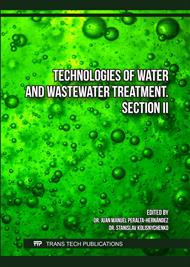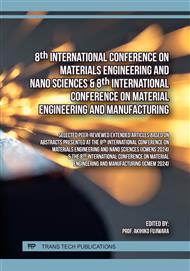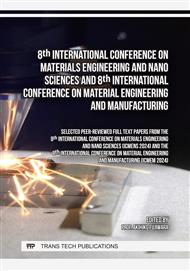p.3
p.13
p.19
p.25
p.31
p.37
p.45
p.53
Modification of the Chitosan Spray Coating on Pineapple Pulp as Adsorbent for Copper Ion Adsorption from Aqueous Solution
Abstract:
One of the major toxicants for living things is copper which consists of ions form in most of the manufacturing wastewater treatment. The drain water before releasing it into the water source is desired to eliminate copper ions (Cu2+) by using adsorption. The bio-wastes as adsorbents applied in this work, such as a dried pineapple pulp (DPP), chitosan flake (CTS), and chitosan spray coating on dried pineapple pulp (CPP) have a surface area of about 45.34, 60.02, and 70.01 m2/g, respectively. The effective Cu2+ eliminated efficiency and adsorption capacity from the copper (II) sulfate in aqueous solution was high with the high surface area. At optimum operating conditions, i.e., initial feed concentration 250 mg/L, pH 6.0, temperature 30 °C, and adsorption time 1 h, the Cu2+ eliminated efficiency in the percentage of DPP, CTS, and, CCP was 63.89, 80.83 and 86.92%, respectively, and adsorption capacity was 31.95, 40.22 and 43.46 mg/g, respectively.
Info:
Periodical:
Pages:
13-18
Citation:
Online since:
September 2024
Authors:
Keywords:
Price:
Сopyright:
© 2024 Trans Tech Publications Ltd. All Rights Reserved
Share:
Citation:




